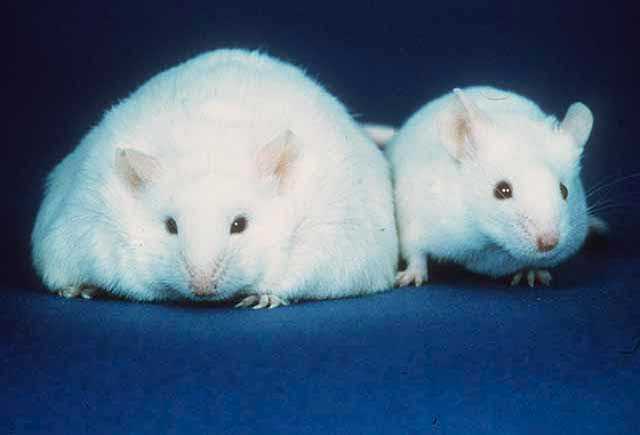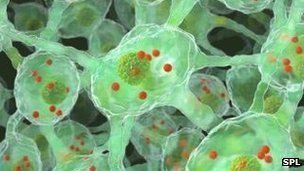Angelina Jolie has preventative double mastectomy as she had an 87% risk of breast cancer
Angelina Jolie has revealed she has had a preventative double mastectomy after doctors estimated she had an 87% chance of contracting breast cancer.
Angelina Jolie, 37, made the decision to undergo the procedure after learning that she is a carrier of the BRCA1 cancer gene.
Her mother, Marcheline Bertrand, died at the age of 56 from ovarian cancer, which Angelina Jolie revealed she has a 50% chance of contracting.
Writing in an editorial piece in the New York Times, Angelina Jolie said: “My doctors estimated that I had an 87% risk of breast cancer and a 50% risk of ovarian cancer, although the risk is different in the case of each woman.
“Only a fraction of breast cancers result from an inherited gene mutation. Those with a defect in BRCA1 have a 65% risk of getting it, on average.
“Once I knew that this was my reality, I decided to be proactive and to minimize the risk as much I could. I made a decision to have a preventive double mastectomy.
“I started with the breasts, as my risk of breast cancer is higher than my risk of ovarian cancer, and the surgery is more complex.
“On April 27, I finished the three months of medical procedures that the mastectomies involved. During that time I have been able to keep this private and to carry on with my work.”
Angelina Jolie’s surgery was successful and doctors say her chances of developing breast cancer have now lowered to less than 5%.
“I wanted to write this to tell other women that the decision to have a mastectomy was not easy,” she wrote.
“But it is one I am very happy that I made.
“My chances of developing breast cancer have dropped from 87 percent to under 5 percent. I can tell my children that they don’t need to fear they will lose me to breast cancer.”

Angelina Jolie has preventative double mastectomy as she had an 87 percent chance of contracting breast cancer
Angelina Jolie praised the support her fiancé Brad Pitt and their children, Maddox, 11, Pax, 9, Zahara, 8, Shiloh, 6, and 4-year-old twins Knox and Vivienne, gave her during treatment.
“It is reassuring that they see nothing that makes them uncomfortable. They can see my small scars and that’s it. Everything else is just Mommy, the same as she always was. And they know that I love them and will do anything to be with them as long as I can.
“I am fortunate to have a partner, Brad Pitt, who is so loving and supportive. So to anyone who has a wife or girlfriend going through this, know that you are a very important part of the transition. Brad was at the Pink Lotus Breast Center, where I was treated, for every minute of the surgeries.
“We managed to find moments to laugh together. We knew this was the right thing to do for our family and that it would bring us closer. And it has.”
Angelina Jolie assured that having the double mastectomy hasn’t changed the way she feels about herself and her womanliness, and added that results of reconstructive surgery “can be beautiful”.
“On a personal note, I do not feel any less of a woman,” she said.
“I feel empowered that I made a strong choice that in no way diminishes my femininity.”
In addition, Angelina Jolie hopes that she can encourage other women to be informed and consider their options.
“I am writing about it now because I hope that other women can benefit from my experience. Cancer is still a word that strikes fear into people’s hearts, producing a deep sense of powerlessness.
“But today it is possible to find out through a blood test whether you are highly susceptible to breast and ovarian cancer, and then take action.”
Angelina Jolie added: “For any woman reading this, I hope it helps you to know you have options. I want to encourage every woman, especially if you have a family history of breast or ovarian cancer, to seek out the information and medical experts who can help you through this aspect of your life, and to make your own informed choices.
“I choose not to keep my story private because there are many women who do not know that they might be living under the shadow of cancer. It is my hope that they, too, will be will able to get gene tested, and that if they have a high risk they, too, will know that they have strong options.
“Life comes with many challenges. The ones that should not scare us are the ones we can take on and take control of. “
February 2nd – Angelina Jolie begins three months of treatments prior to undergoing a preventative double mastectomy, starting with a “nipple delay, which rules out disease in the breast ducts behind the nipple and draws extra blood flow to the area”.
February 16th – The actress undergoes the major surgery – an 8-hour operation which sees the breast tissue removed before temporary fillers are put in place.
April 4th – Angelina Jolie attends the Women in the World Summit in New York looking in good spirits.
April 11th – Angelina Jolie is pictured with William Hague at the G8 Summit in London.
April 20th – Angelina Jolie has her breasts reconstructed with implants
April 27th – The mother-of-six completes the medical process. She is told that the surgery was a success and her chances of contracting breast cancer have now been reduced from 87% to less than 5%
May 14th – Angelina Jolie reveals her decision in an editorial piece published in the New York Times newspaper.
WHAT IS PREVENTATIVE MASTECTOMY?
Preventive mastectomy is the surgical removal of one or both breasts. It is done to prevent or reduce the risk of breast cancer in women who are at high risk of developing the disease.
In a total mastectomy, doctors remove the entire breast and nipple, while in a subcutaneous mastectomy, the doctor removes the breast tissue but leaves the nipple intact.
Existing data suggests that the treatment may significantly reduce the chances of developing tumors by about 90%.
Many choose to have breast reconstruction to restore the shape of the breast following surgery.
SOURCE: www.cancer.go
[youtube Co39Qo_6Ii4]


